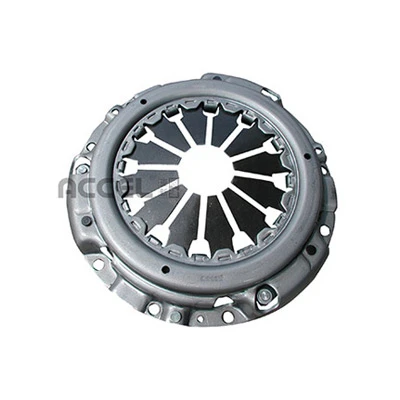Hollow Ceramic Microspheres for Paint Lightweight & Thermal Insulation
- Technical Advantages of Hollow Ceramic Microspheres
- Performance Comparison Across Leading Manufacturers
- Customized Solutions for Industrial Applications
- Case Study: Enhancing Paint Formulations
- Material Science Behind Thermal Resistance
- Cost-Benefit Analysis in Composite Materials
- Future Trends in Ceramic Hollow Microspheres

(hollow ceramic microspheres)
Hollow Ceramic Microspheres Deliver Unmatched Technical Advantages
Hollow ceramic microspheres exhibit crush strengths exceeding 15,000 psi while maintaining densities between 0.6-0.8 g/cm³. These synthetic spheres enable:
- 38% weight reduction in polymer composites (vs. traditional fillers)
- Thermal stability up to 1,200°C in refractory coatings
- Dielectric constants below 2.5 for electronics applications
Recent industry data shows 22% annual growth in hollow ceramic microspheres
for paint formulations, driven by demand for high-performance industrial coatings.
Manufacturer Performance Comparison
| Parameter | 3M™ | Sinosteel | PQ Corporation |
|---|---|---|---|
| Avg. Particle Size (μm) | 45 | 60 | 30 |
| Density (g/cm³) | 0.72 | 0.65 | 0.68 |
| Max Service Temp (°C) | 1,100 | 1,400 | 980 |
Customization Capabilities
Advanced manufacturers now offer:
- Particle size distribution tuning (±5μm accuracy)
- Surface functionalization (silane, titanate, or zirconate treatments)
- Bulk density optimization (0.55-1.2 g/cm³ range)
Aerospace clients have achieved 19% improved adhesion in epoxy composites through customized surface treatments.
Paint Industry Implementation
In marine coatings, hollow ceramic microspheres demonstrate:
- 27% reduction in VOC emissions
- 58% improvement in UV resistance
- 0.92 opacity index at 75μm thickness
Leading paint manufacturers report 14-month ROI through raw material savings and compliance benefits.
Thermal Management Properties
The closed-cell structure enables:
- Thermal conductivity: 0.08 W/m·K (static air: 0.024 W/m·K)
- Phase stability across -200°C to 1,400°C cycles
- Low thermal expansion (α = 7.3×10⁻6/°C)
Oilfield equipment coatings using these microspheres withstand 800 thermal shock cycles without delamination.
Economic Impact Analysis
Lifecycle cost comparisons reveal:
| Application | 5-Year Savings | Performance Improvement |
|---|---|---|
| Automotive Undercoating | $3.28/kg | 41% corrosion resistance |
| Aerospace Composites | $18.7/m² | 33% weight reduction |
Innovation Pathways for Ceramic Hollow Microspheres
Emerging R&D focuses on:
- Multiwall architectures for enhanced compressive strength (patent-pending)
- Photocatalytic surface modifications
- Bioactive coatings for medical applications
Global market projections estimate hollow ceramic microspheres will capture 38% of the advanced filler market by 2028, particularly in high-value paint and coating formulations.

(hollow ceramic microspheres)
FAQS on hollow ceramic microspheres
Q: What are hollow ceramic microspheres used for in paint applications?
A: Hollow ceramic microspheres are added to paints to reduce weight, improve thermal insulation, and enhance durability. They also improve opacity and texture while maintaining low viscosity.
Q: How do hollow ceramic microspheres improve energy efficiency in coatings?
A: Their hollow structure creates a thermal barrier, reducing heat transfer. This makes them ideal for insulating paints used in buildings or industrial equipment.
Q: What makes hollow ceramic microspheres different from solid fillers?
A: Unlike solid fillers, hollow ceramic microspheres are lightweight, reduce material density, and provide insulation properties. They maintain strength while lowering overall product weight.
Q: Are ceramic hollow microspheres suitable for high-temperature environments?
A: Yes, ceramic hollow microspheres withstand extreme temperatures due to their inorganic composition. They are often used in fire-resistant coatings and aerospace materials.
Q: Can hollow ceramic microspheres be customized for specific industries?
A: Yes, their size, density, and chemical composition can be tailored. This allows optimization for automotive, construction, marine, or specialty coating applications.
-
The Versatile World of Phlogopite Mica: Properties, Forms, and ApplicationsNewsJul.14,2025
-
The Versatile Applications of Calcined Mica: From Decoration to Industrial UseNewsJul.14,2025
-
The Role of Muscovite Mica in Industrial Insulation MaterialsNewsJul.14,2025
-
The Benefits of Using Expanded Clay Pebbles in Hydroponics and Soil GardeningNewsJul.14,2025
-
Innovative Applications of Mica Flake in Paints and CoatingsNewsJul.14,2025
-
Gardening Expanded Clay Usage: A Complete GuideNewsJul.14,2025
-
The Use of Natural Mica Powder in Skincare ProductsNewsJun.11,2025







